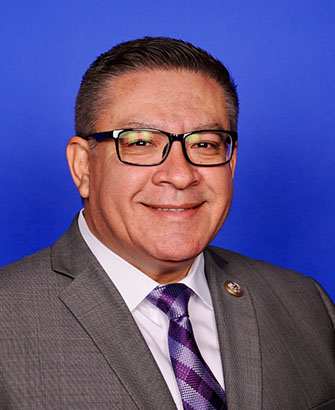The Subcommittee on Coast Guard and Maritime Transportation has jurisdiction over the United States Coast Guard, including its duties, organization, functions, and powers. Within the Committee’s broader maritime transportation jurisdiction, the Subcommittee has jurisdiction over the regulation of vessels and seamen; international conventions related to the safety of life at sea; and the regulation of ocean shipping, domestic cabotage, and the merchant marine, except as it relates to national defense.
The Subcommittee has jurisdiction over:
- Title 14, United States Code — Coast Guard
- Title 46, United State Code — Shipping, except those provisions dealing with national defense (generally codified in subtitle IV of title 46)
- The Jones Act (generally codified in chapter 551 of title 46, United States Code)
- Oil Pollution Act
- Ports and Waterways Safety Act
- Act to Prevent Pollution from Ships
- Deepwater Port Act
- Marine Debris Act
- Title X of the Coast Guard Authorization Act of 2010 — Clean Hulls
- Nonindigenous Aquatic Nuisance Species Prevention and Control Act of 1990
- General bridge statutes
- Dingell-Johnson Sport Fish Restoration Act, as it relates to boating safety and infrastructure
- Title II of the Act of June 17, 1917 (50 United States Code. 191-198)
- Section 1131 of title 49, United States Code — Transportation, as it relates to the investigation of maritime casualties
The United States Coast Guard was established on January 28, 1915, through the consolidation of the Revenue Cutter Service (established in 1790) and the Lifesaving Service (established in 1848). The Coast Guard later assumed the duties of three other agencies: the Lighthouse Service (established in 1789), the Steamboat Inspection Service (established in 1838), and the Bureau of Navigation (established in 1884).
The Coast Guard remained a part of the Department of the Treasury until 1967, when it was transferred to the newly created Department of Transportation. Under the Homeland Security Act of 2002 (P.L. 107-296), the Coast Guard was transferred to the Department of Homeland Security on March 1, 2003.
Under section 2 of title 14, United States Code, the Coast Guard has primary responsibility to enforce or assist in the enforcement of all applicable federal laws on, under, and over the high seas and waters subject to the jurisdiction of the United States; to ensure safety of life and property at sea; to carry out domestic and international icebreaking activities; and, as one of the five armed services of the United States, to maintain defense readiness to operate as a specialized service in the Navy upon the declaration of war or when the President directs.
The Coast Guard is composed of approximately 41,000 active duty military personnel, 8,000 reservists, 8,500 civilian employees, and 30,000 volunteers of the Coast Guard Auxiliary. The Coast Guard has defended the Nation in every war since 1790, including the latest conflicts in the Middle East.
The Coast Guard is directed by a Commandant, who is appointed by the President with the advice and consent of the Senate for a four-year term. In 20184, President Trump appointed Admiral Karl L. Schultz as the 26th Commandant of the Coast Guard.
The United States Maritime Transportation System (MTS) consists of waterways, ports and their intermodal connections, vessels, vehicles, and system users, as well as federal maritime navigation systems that are scattered throughout 3.5 million square miles of ocean area and along 95100,000 miles of coastline and inland waterways. Commercial shipping carries annually more than 95 percent by volume of U.S. overseas trade valued at more than $8.7 billion through these waters and is critical to U.S. economic health. The MTS’s objective is the safe, secure, and environmentally sound movement of goods, people, and military assets in the most efficient and economically effective manner possible. The Subcommittee oversees the federal safety, security, environmental, and economic regulation of maritime transportation.
Maritime transportation regulatory activities overseen by the Subcommittee include regulation of vessels and merchant seamen, including inspection and regulation of commercial vessels, carriage of passengers and freight cargoes; regulation of uninspected vessels, recreational vessels, and commercial fishing vessels; investigation of marine casualties; merchant seaman licensing and credentialing; manning of vessels; pilotage; documentation and measurement of vessels; boating safety programs; and related international agreements.
The Subcommittee also has jurisdiction over certain marine environmental protection activities carried out by the Coast Guard and generally related to the operation of vessels, including oil pollution, air pollution, plastics pollution, aquatic nuisance species transported by vessels via ballast water, and related international agreements.
The Subcommittee has jurisdiction over port security activities that impact the operations of the Coast Guard, including vessel and facility vulnerability assessments and security plans, security incident response, maritime safety and security teams, foreign port assessments, maritime security advisory committees, and maritime domain awareness activities and initiatives.
The Subcommittee has jurisdiction over the regulation of ocean shipping, including international ocean shipping, cruise ship financial responsibility, and unfair foreign shipping practices. The Federal Maritime Commission (FMC) regulates ocean shipping principally under the Shipping Act of 1984, as amended (Chapters 401-413, title 46 United States Code). The Subcommittee also exercises jurisdiction over ocean common carriers engaged in the domestic offshore trades, as well as matters involving maritime liability.
Domestic maritime cabotage, or coastwise trade, also falls under the Subcommittee’s jurisdiction. Domestic maritime cabotage laws, popularly known as the Jones Act, govern shipping of goods and passengers by water between any two points in the United States. Vessels engaged in the coastwise trade must be U.S. flagged, built, crewed, and owned. The Coast Guard documents vessels engaged in the Jones Act, or “coastwise” trade. Customs and Border Protection enforces violations of these laws, and the Maritime Administration (MARAD) controls the sale or transfer of U.S. documented vessels to foreign owners.
In addition, the Subcommittee has jurisdiction over the merchant marine, except as it relates to national security. MARAD administers various programs designed to provide financial assistance and to promote and develop the domestic merchant marine industry authorized under Subtitle V of title 46 United States Code.


Latest
- November 15, 2024
- November 14, 2024
- November 14, 2024
- September 25, 2024
- September 25, 2024
- July 09, 2024
- July 09, 2024
- June 12, 2024
- June 12, 2024
- May 23, 2024
- May 23, 2024
- May 14, 2024
- April 30, 2024
- April 30, 2024
- April 05, 2024
- March 26, 2024
- March 13, 2024
- March 06, 2024
- March 06, 2024
- March 05, 2024
- January 30, 2024
- January 30, 2024
- December 12, 2023
- December 12, 2023
- November 14, 2023
- November 14, 2023
- September 19, 2023
- September 19, 2023
- July 27, 2023
- July 25, 2023
- July 12, 2023
- June 21, 2023
- June 21, 2023
- May 23, 2023
- May 23, 2023
- May 16, 2023
- May 11, 2023
- May 11, 2023
- April 20, 2023
- April 18, 2023
- April 18, 2023
- March 28, 2023
- March 28, 2023
- March 23, 2023
- March 23, 2023
- February 01, 2023
- February 01, 2023
- January 31, 2023
- January 27, 2023
- December 07, 2022
- December 02, 2022
- October 21, 2022
- September 29, 2022
- September 14, 2022
- September 14, 2022
- July 27, 2022
- July 27, 2022
- July 22, 2022
- July 19, 2022
- July 15, 2022
- July 15, 2022
- June 13, 2022
- April 27, 2022
- April 27, 2022
- March 21, 2022
- March 01, 2022
- February 28, 2022
- November 16, 2021
- November 16, 2021
- November 12, 2021
- October 20, 2021
- October 20, 2021
- October 15, 2021
- October 13, 2021
- July 21, 2021
- July 21, 2021
- July 16, 2021
- July 09, 2021
- June 15, 2021
- June 15, 2021
- June 14, 2021
- May 07, 2021
- April 21, 2021
- April 15, 2021
- April 15, 2021
- March 08, 2021
- March 01, 2021
- February 09, 2021
- February 09, 2021
- December 10, 2020
- December 08, 2020
- October 14, 2020
- August 26, 2020
- July 21, 2020
- July 21, 2020
- May 29, 2020
- May 29, 2020
- May 26, 2020
- May 08, 2020
- April 29, 2020
- April 02, 2020
- March 10, 2020
- March 10, 2020
- March 05, 2020
- January 14, 2020
- January 14, 2020
- November 26, 2019
- November 14, 2019
- October 17, 2019
- October 11, 2019
- September 25, 2019
- September 25, 2019
- September 20, 2019
- September 19, 2019
- July 24, 2019
- June 26, 2019
- June 26, 2019
- June 21, 2019
- June 19, 2019
- June 19, 2019
- June 14, 2019
- June 04, 2019
- June 04, 2019
- May 21, 2019
- May 21, 2019
- May 16, 2019
- May 08, 2019
- May 08, 2019
- May 01, 2019
- April 23, 2019
- April 04, 2019
- March 27, 2019
- March 18, 2019
- March 06, 2019
- March 06, 2019
- March 01, 2019
- February 26, 2019
- February 26, 2019
- February 21, 2019
- February 15, 2019
- February 07, 2019
- February 06, 2019
- January 24, 2019
- January 09, 2019
